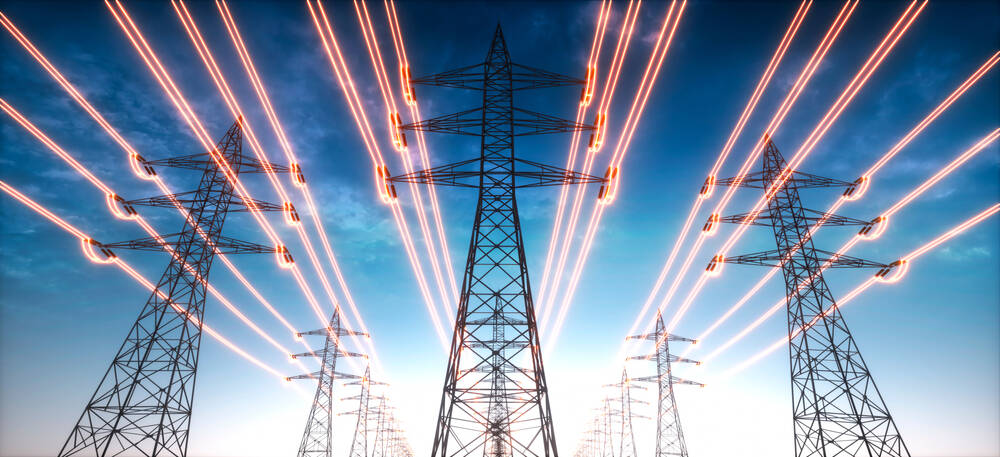Energy Companies Told To Recharge For AI Datacenter Surge

US energy companies must adapt to the AI-driven datacenter boom with power use forecast to outstrip supply within the next few years.
According to analysis by management consultancy Bain & Company, investments needed to build this additional capacity carry risks, but to not do so could mean utility providers miss out on extra revenues.
Datacenter expansion is being propelled by demand for more and more infrastructure to support the development and deployment of AI models, with capital expenditure on bit barns projected to grow nearly 30 percent this year alone.
Many of the biggest datacenter investors are based in the US and it is one of the locations expected to substantially expand capacity over the rest of this decade. A study by Rystad Energy published earlier this year estimated that power consumption from all those server farms will more than double by 2030.
The latest report from Bain warns that growing energy use could outstrip supply in just a couple of years, and utilities should look to boost their annual energy generation by up to 26 percent by 2028 to fulfil demand.
Bain says this presents a stark challenge to the energy companies, which have until now faced flat or shrinking demand in the US market that has led them to prioritize efficiency over scaling capacity.
Electrical vehicles and repatriated manufacturing are also expected to drive up energy use, however, the report indicates that new datacenters in in places such as Northern Virginia will underpin use increases over the next few years, making up 44 percent of the load growth between 2023 and 2028.
It isn't the US alone that is juggling these challenges; a report last year found that European datacenter operators are finding it harder to secure power for operations. In Ireland, which has become another hotspot, more than a fifth of its electricity supply was consumed by datacenters during 2023.
According to Bain's estimates, global energy consumption by data facilities could grow at a compound annual rate of between 10 to 24 percent from 2023 to 2027, potentially topping 1 million gigawatt hours.
Serving a 1 gigawatt datacenter requires the capacity of about four natural gas plants or around half of a large nuclear plant, the Bain report claims, and meeting the expanding global demand could cost more than $2 trillion in new energy generation resources.
Utility companies thus face a "high-wire balancing act," where booming additional datacenters represent the most significant load growth in decades, and taking advantage of this could fund energy transition investments and potentially reduce residential rates, Bain says.
The report recognizes that the risk and the cost of the massive investment needed to supply datacenter projects may outweigh the benefits for some utilities, but warns that missing out on potential growth is also a danger. Speed to market is vital for operators, it says, and they may move to other locations or invest in alternatives, including generating their own power.
Bain says utility companies need to revamp the way their business operates to support a rapid scale-up of energy resources, modernizing their operating model to accelerate resource planning and construction of additional or upgraded power generation, transmission, and distribution lines.
Just last month, financial services biz Morgan Stanley published a report estimating that datacenter could emit 2.5 billion tonnes of greenhouse gas (GHG) emissions worldwide between now and the end of the decade, three times more than if generative AI had not been developed.
- Submer dives into $55.5M funding to cool down hot-blooded AI datacenters
- Blackstone invests £10B to build Europe's 'biggest AI datacenter' in UK
- TSMC, Samsung reportedly eye UAE's silicon fields for fab expansion
- Nvidia and chums inject $160M into Applied Digital to keep GPU sales rolling
However, Bain's takeaway is that investment in decarbonization solutions including carbon capture, utilization, and sequestration (CCUS); and carbon dioxide removal (CDR) technologies, could happen at the same time.
Or perhaps we could heed billionaires like Bill Gates and former Google CEO Eric Schmidt, the latter of which told a recent AI summit that the world should just build as many AI datacenters as necessary, as we're not going to meet global climate goals without the help of AI. ®
From Chip War To Cloud War: The Next Frontier In Global Tech Competition
The global chip war, characterized by intense competition among nations and corporations for supremacy in semiconductor ... Read more
The High Stakes Of Tech Regulation: Security Risks And Market Dynamics
The influence of tech giants in the global economy continues to grow, raising crucial questions about how to balance sec... Read more
The Tyranny Of Instagram Interiors: Why It's Time To Break Free From Algorithm-Driven Aesthetics
Instagram has become a dominant force in shaping interior design trends, offering a seemingly endless stream of inspirat... Read more
The Data Crunch In AI: Strategies For Sustainability
Exploring solutions to the imminent exhaustion of internet data for AI training.As the artificial intelligence (AI) indu... Read more
Google Abandons Four-Year Effort To Remove Cookies From Chrome Browser
After four years of dedicated effort, Google has decided to abandon its plan to remove third-party cookies from its Chro... Read more
LinkedIn Embraces AI And Gamification To Drive User Engagement And Revenue
In an effort to tackle slowing revenue growth and enhance user engagement, LinkedIn is turning to artificial intelligenc... Read more

